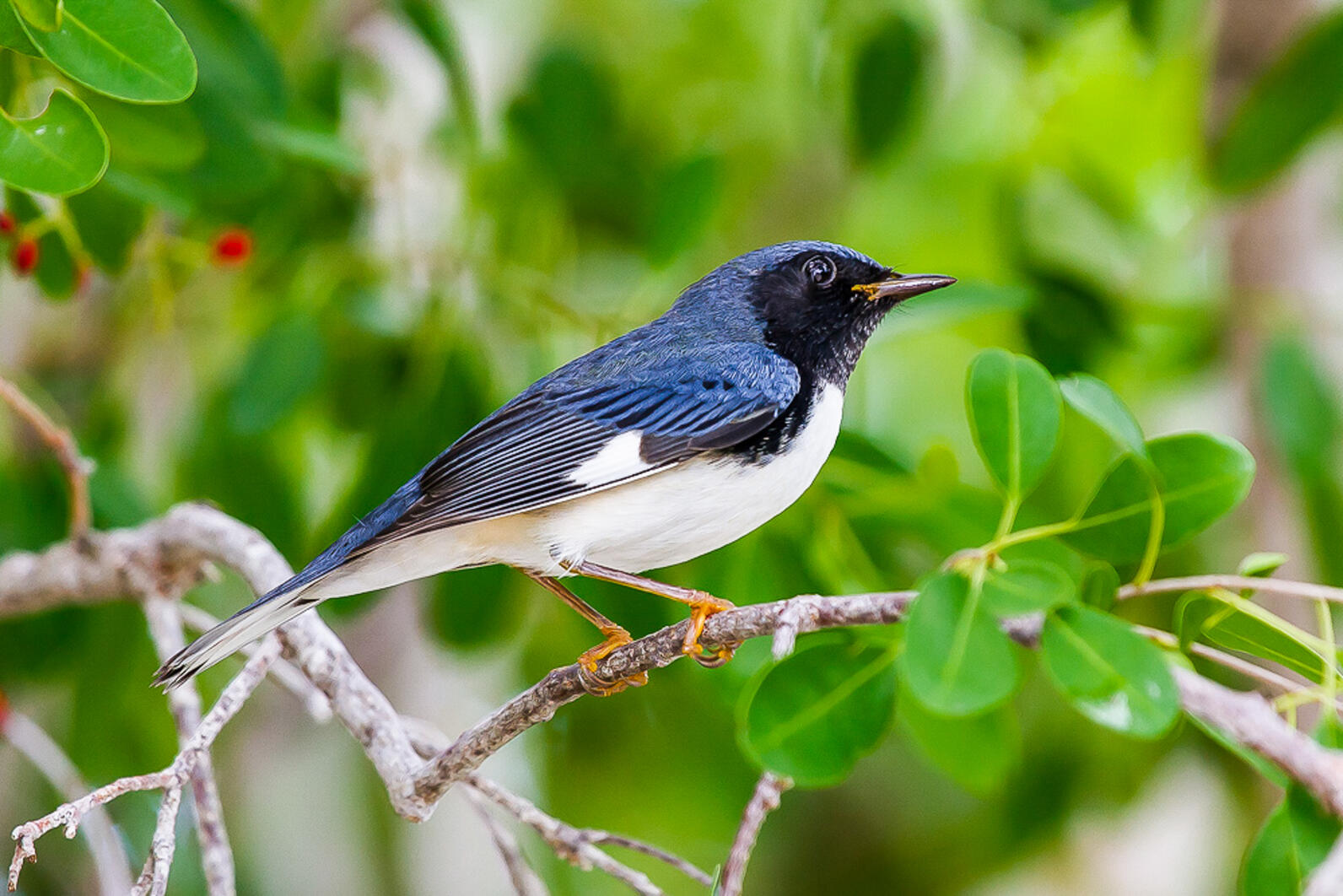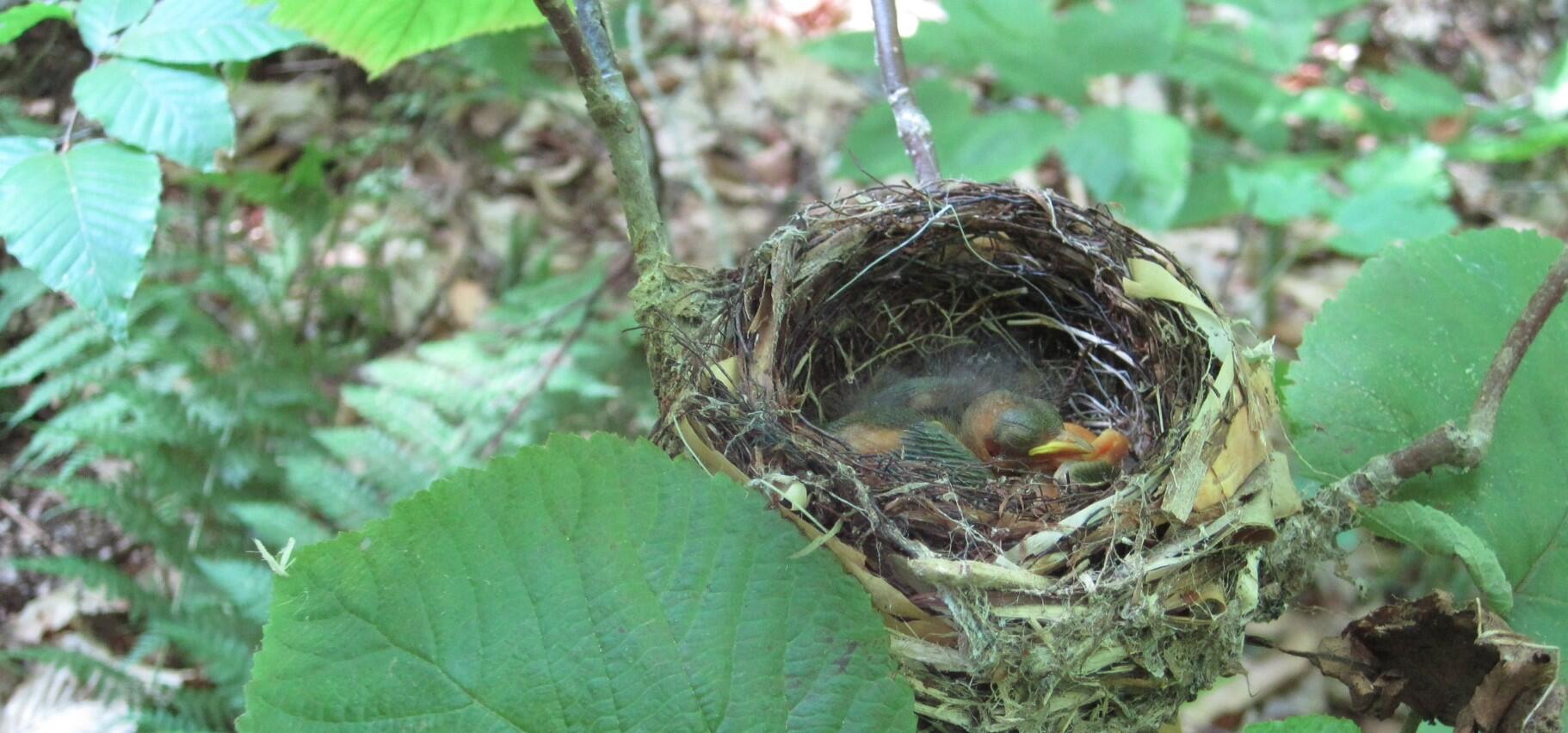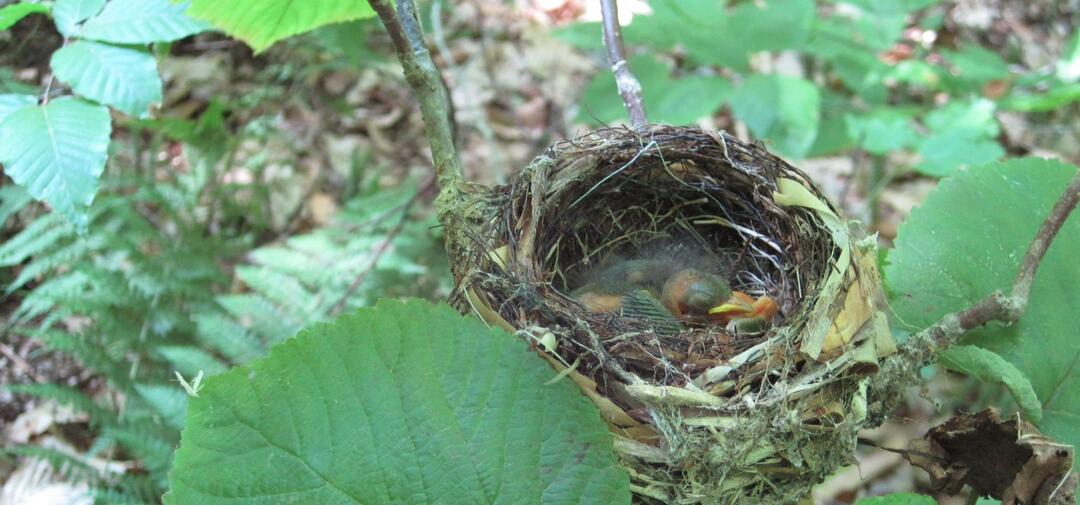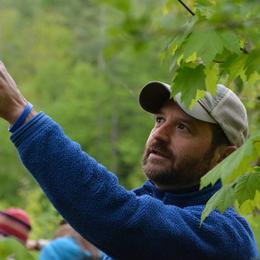The sounds of songbirds often serve as the backdrop to summer woods walks. If you pay attention, you may discover that you tend to hear certain songs in one area of the forest, while in another area it’s a chorus of an entirely different group of birds. Is this a coincidence? Likely not. Each species of bird typically has some specific forest attributes that they are keying in on. This could be a well-developed leaf litter layer in a hardwood stand for the Ovenbird or the pocket of eastern hemlock in the case of the Black-throated Green Warbler. It can be helpful to think about the birds in the forest as all belonging to a community, each with its own particular role it plays. Those roles, often referred to as niches, can be related to where they nest, where they forage, and what they eat. If managing a forest with birds in mind is a stewardship goal it is important to understand the bird community that one would like to support along with the niche each community member (individual species) fills.
Throughout Vermont northern hardwoods serve as the most primary forest type across the landscape. Sugar maple, American beech, and yellow birch are common along with associated species such as white ash, white pine, black cherry, and others. For the most part these forests range in age from 60-100 years. The bird community that could be expected in these forest conditions is quite diverse (in fact it may include more than 70 different species!) and be comprised of species such as Red-eyed Vireo, Black-throated Blue Warbler, Yellow-bellied Sapsucker, and the Vermont state bird, Hermit Thrush. Which species will actually be there however is based in part on the niches they fill and whether the forest has the attributes to support them.
Let’s take a look at the four bird species listed above to consider how stewardship activities can ensure they will be a member of the community, starting with the Red-eyed Vireo. This one is pretty easy. Simply keep forest as forest and this very common migratory species is likely to be there. Red-eyed Vireo are sensitive to larger clearcuts and forest fragmentation, however lighter touch, ecologically-based forest management appears to accommodate them quite well.
Encouraging Black-throated Blue Warbler into a particular forest generally requires thinking about regeneration; the growth of young trees and shrubs in the understory. With most nest placement around 3-5 feet above the ground and foraging for insects also taking place in the shrub layer and lower canopy, open, park-like forest conditions are not likely to attract this migratory species. As appropriate, consider implementing forest management practices that promote regeneration. A licensed forester is a critical resource for planning this out.
Aspen is not a tree species with high market value, however it does have high habitat value. Due to it being a relatively soft wood with a propensity for heartwood decay, Vermont’s native aspen are often selected by Yellow-bellied Sapsucker as a place to excavate a nest cavity. These live trees of any species are referred to as cavity trees, and along with standing dead trees (aka snags) are an important attribute of any forest; the bigger the better.
A forest feature that often goes overlooked and under-appreciated is leaf litter. While perhaps seemingly abundant it should not be taken for granted. With an increasing distribution and populations of non-native earthworms, the long-term future of Hermit Thrush and other ground dwelling bird species may depend on us paying closer attention. Most Hermit Thrush forage in the leaf litter for beetles, caterpillars, ants, and flies. High populations of non-native earthworms, such as the crazy snake worm, can quickly decimate that leaf litter leading to long-term forest health issues. While there are currently no management techniques to deal with this issue, minimizing their spread is an activity that can be focused on.
Stewarding the forest for an overall diverse bird community can be boiled down to one word; complexity. By promoting a diversity of tree species, ages and sizes of trees, standing dead wood and live trees with cavities, and a rich forest floor, the bird community will also be more diverse. The Woods, Wildlife, and Warblers program, a partnership between Audubon Vermont and the Vermont Woodlands Association, is an excellent resource to help promote a vibrant forest bird community.
Learn more at www.woodsandwildlife.org.












